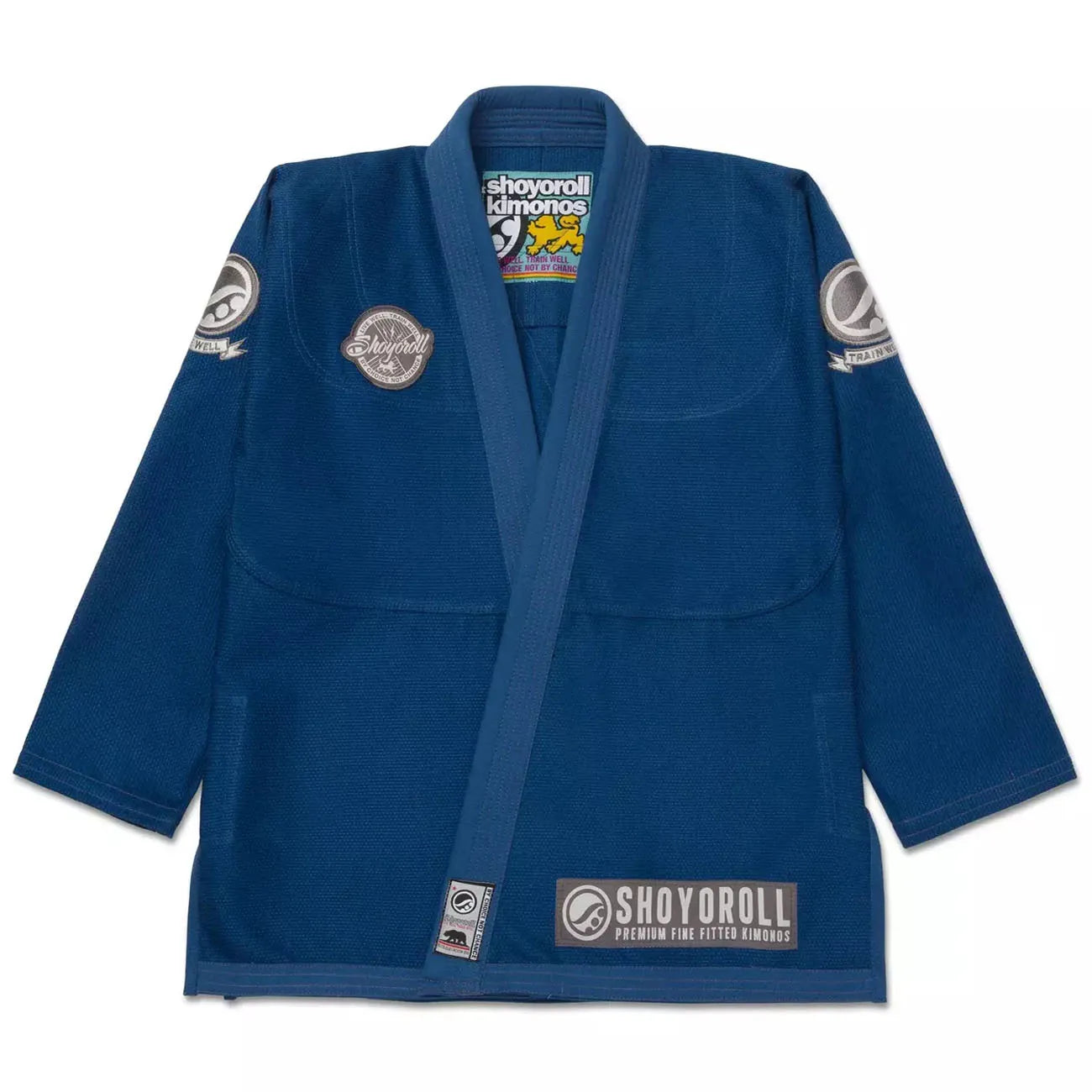Brazilian Jiu Jitsu vs Traditional Jiu Jitsu: Key Differences Explained
Brazilian Jiu Jitsu (BJJ) and Traditional Jiu Jitsu (TJJ) both offer effective self-defense skills. Yet, each has unique strengths and philosophies. This guide breaks down their differences to help you choose the best fit for self-defense, fitness, or personal growth. Whether you're a beginner or a seasoned martial artist, understanding these styles is key.
Table of Contents
- Understanding the Two Styles
- Brazilian Jiu Jitsu Overview
- Traditional Jiu Jitsu Overview
- The Roots and Philosophy
- Techniques and Training
- Who Practices Each Style?
- Practical Use and Effectiveness
- Comparing Their Philosophies
- Choosing the Right Fit
- Quick Comparison Table
- FAQs
- Final Thoughts
Understanding the Two Styles
BJJ and TJJ share roots but differ in focus and practice. Knowing their core principles helps you decide which aligns with your goals. This section explores their origins, techniques, and training methods.
Brazilian Jiu Jitsu OverviewBrazilian Jiu Jitsu evolved from Japanese Jiu Jitsu in the early 20th century. It emphasizes grappling, ground control, and submission techniques. BJJ teaches smaller individuals to defeat larger opponents using leverage and strategy. Its practical approach makes it a cornerstone of modern mixed martial arts (MMA). |

|
 |
Traditional Jiu Jitsu OverviewTraditional Jiu Jitsu, also called Japanese or classical Jiu Jitsu, dates back centuries. Developed for samurai in feudal Japan, it covers strikes, joint locks, throws, and weapon defenses. TJJ is a complete self-defense system, blending tradition with practical combat skills. |
Fact: According to martial arts historian John Danaher, BJJ’s focus on ground fighting was revolutionary, shifting martial arts toward practical, real-world applications in the 20th century.
The Roots and Philosophy
Each style carries a distinct history and mindset. These roots shape how practitioners train and apply their skills. Let’s dive into the origins and philosophies behind BJJ and TJJ.
Traditional Jiu Jitsu’s Historical Roots
Traditional Jiu Jitsu began in feudal Japan for battlefield survival. Samurai relied on its techniques when unarmed or disarmed. TJJ emphasizes discipline, respect, and ritual. Training often includes structured classes with formal etiquette, preserving its cultural heritage.
Brazilian Jiu Jitsu’s Modern Evolution
BJJ emerged when Japanese judoka Mitsuyo Maeda taught in Brazil. The Gracie family refined his teachings, focusing on ground fighting and real-world testing. BJJ prioritizes effectiveness over tradition. Its global popularity grew through MMA and self-defense applications.
Techniques and Training
Techniques define how each style prepares you for combat. Training methods also vary, affecting how skills are learned and applied. This section compares their approaches.
Traditional Jiu Jitsu Techniques
|

|
 |
Brazilian Jiu Jitsu Techniques
|
Figure: A 2023 survey by Martial Arts Today found 78% of BJJ practitioners felt confident in one-on-one self-defense scenarios due to live sparring.
Who Practices Each Style?
The practitioner’s goals often determine their chosen style. This section explores the communities drawn to BJJ and TJJ. Understanding their appeal helps you find your fit.
Traditional Jiu Jitsu Practitioners
TJJ attracts those who value martial arts history and tradition. Its diverse techniques appeal to enthusiasts of samurai culture. Formal training suits those seeking discipline and a structured learning path.
Brazilian Jiu Jitsu Practitioners
BJJ draws athletes, MMA fighters, and fitness-focused individuals. Its practical self-defense and welcoming gym culture make it beginner-friendly. Many join for physical fitness and community bonds.
Practical Use and Effectiveness
How do these styles perform in real-world scenarios? This section examines their strengths in self-defense and practical applications. Knowing their effectiveness guides your choice.
Traditional Jiu Jitsu in ActionTJJ excels in unpredictable situations. It prepares you for multiple attackers, standing fights, or armed threats. Its broad skill set makes it versatile for varied self-defense needs. |

|
 |
Brazilian Jiu Jitsu in ActionBJJ shines in one-on-one ground fights. Its techniques dominate in MMA and law enforcement training. BJJ’s focus on submissions ensures control in close-quarters combat. |
Quote: UFC champion Royce Gracie once said, “BJJ allows a smaller person to control a bigger opponent through technique, not strength.”
Read More: What Is the Highest Rank in Brazilian Jiu Jitsu?
Comparing Their Philosophies
Philosophy shapes the training experience. This section highlights how BJJ and TJJ differ in mindset and approach. These differences influence your journey as a practitioner.
Traditional Jiu Jitsu’s Mindset
TJJ values tradition, discipline, and respect. Training is methodical, focusing on form and heritage. Classes maintain a formal tone, rooted in samurai principles.
Brazilian Jiu Jitsu’s Mindset
BJJ embraces a practical, hands-on approach. Live sparring drives skill development through trial and error. Its casual, sport-oriented vibe fosters camaraderie and innovation.
Shoyoroll Feature Products

🔥 SAVE UPTO 50%
✅ 30 Days Return & Refund
🚚 Free Worldwide Shipping

🔥 SAVE UPTO 50%
✅ 30 Days Return & Refund
🚚 Free Worldwide Shipping

🔥 SAVE UPTO 50%
✅ 30 Days Return & Refund
🚚 Free Worldwide Shipping
Choosing the Right Fit
Your goals determine the best style for you. This section offers guidance on matching BJJ or TJJ to your needs. Consider your priorities to make an informed choice.
Factors to Consider
- Self-defense: BJJ excels in ground fighting; TJJ offers versatility for varied threats.
- Fitness: BJJ’s intense sparring boosts cardio and strength. TJJ builds coordination with less physical demand.
- Competition: BJJ has a global tournament scene. TJJ offers fewer competitive options.
- Cultural Interest: TJJ suits those drawn to historical martial arts and tradition.
Quick Comparison Table
|
Aspect |
Traditional Jiu Jitsu |
Brazilian Jiu Jitsu |
|
Origin |
Feudal Japan, samurai roots |
Brazil, early 20th century, Gracie family |
|
Main Focus |
Strikes, throws, joint locks, weapons |
Ground grappling, submissions, leverage |
|
Training Style |
Structured, kata, light sparring |
Live sparring, position drills |
|
Application |
Broad self-defense, including weapons |
One-on-one ground fighting |
|
Philosophy |
Tradition, discipline, heritage |
Practicality, adaptation, competition |
|
Community |
Formal, traditional |
Inclusive, sport-oriented |
Related Topic: Brazilian Jiu Jitsu World Rankings
FAQs
What is the main difference between BJJ and TJJ?
BJJ focuses on ground grappling and submissions, ideal for one-on-one fights. TJJ includes strikes, throws, and weapon defenses for broader self-defense scenarios.
Which is better for self-defense?
BJJ is highly effective for ground-based, one-on-one encounters. TJJ offers versatility for standing fights, multiple attackers, or armed threats.
Can beginners start with either style?
Yes, both are beginner-friendly. BJJ gyms often have a welcoming, inclusive vibe. TJJ schools emphasize structured learning, ideal for those who prefer formal training.
Is BJJ or TJJ better for fitness?
BJJ provides intense cardio and strength workouts through live sparring. TJJ improves coordination and flexibility but is less physically demanding.
Are there competitions for both styles?
BJJ has a robust global tournament scene. TJJ competitions are less common but exist in some traditional martial arts circles.
Check Out Our Best Selling Product

🔥 SAVE UPTO 50% - Limited Time Offer
✅ 30 Days Return & Refund Policy
🚚 Free Worldwide Shipping
Final Thoughts
BJJ and TJJ both offer valuable skills for self-defense and personal growth. TJJ connects you to ancient samurai techniques with a broad combat approach. BJJ hones your ground game through practical, hands-on training. The best choice depends on your goals—self-defense, fitness, or cultural interest. Visit a local dojo or BJJ gym to try both. Feel the vibe, test the techniques, and choose what suits your lifestyle. Either way, you’ll build confidence, discipline, and skills that last a lifetime.






